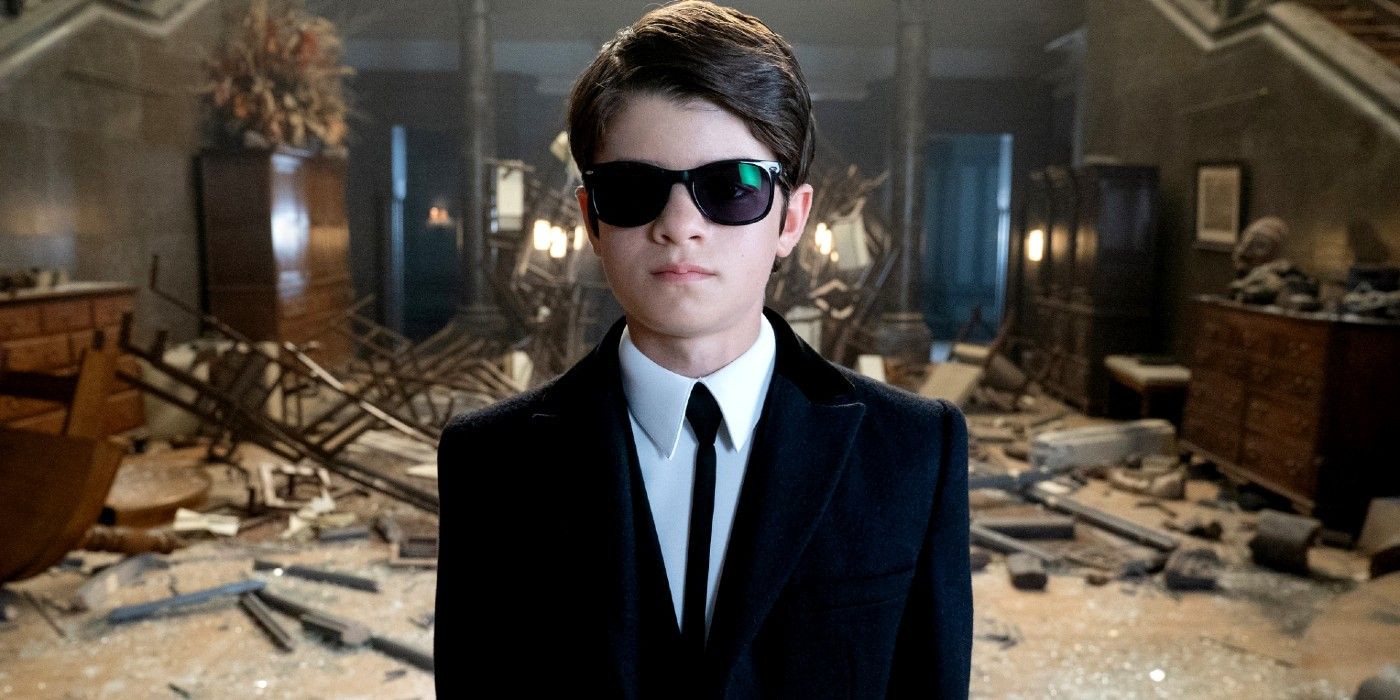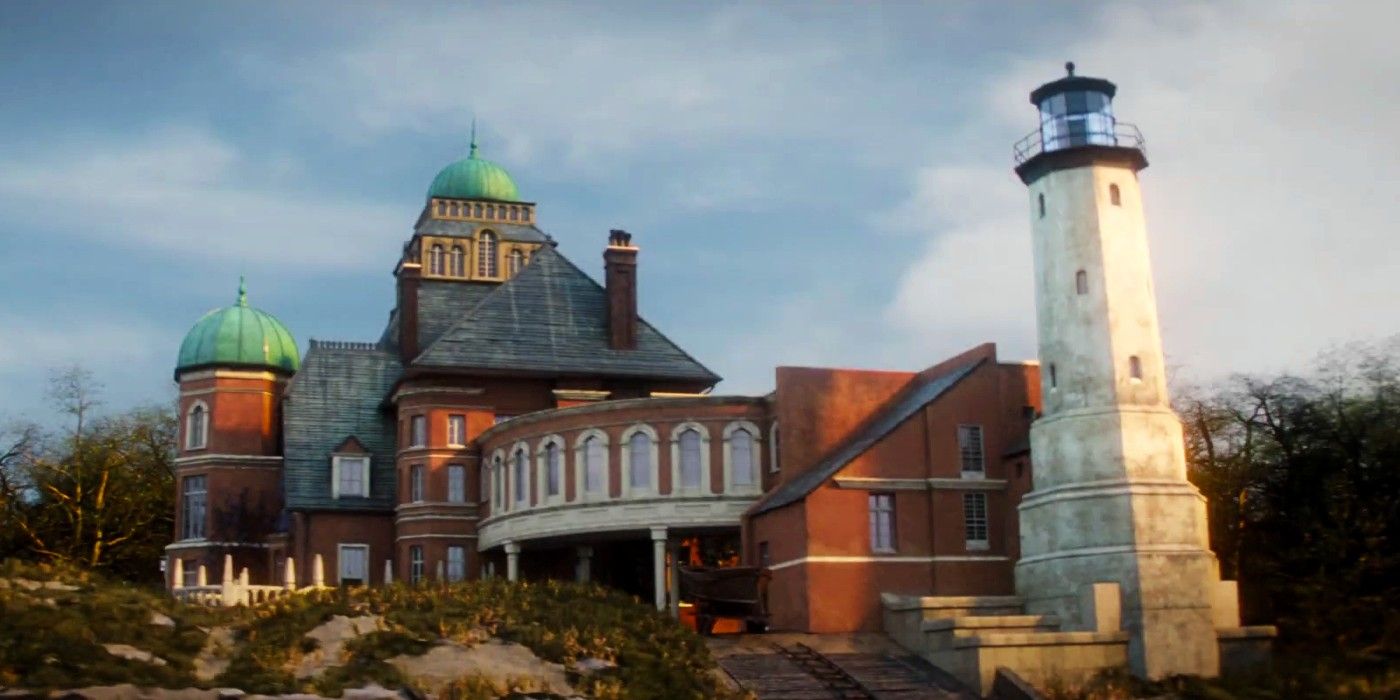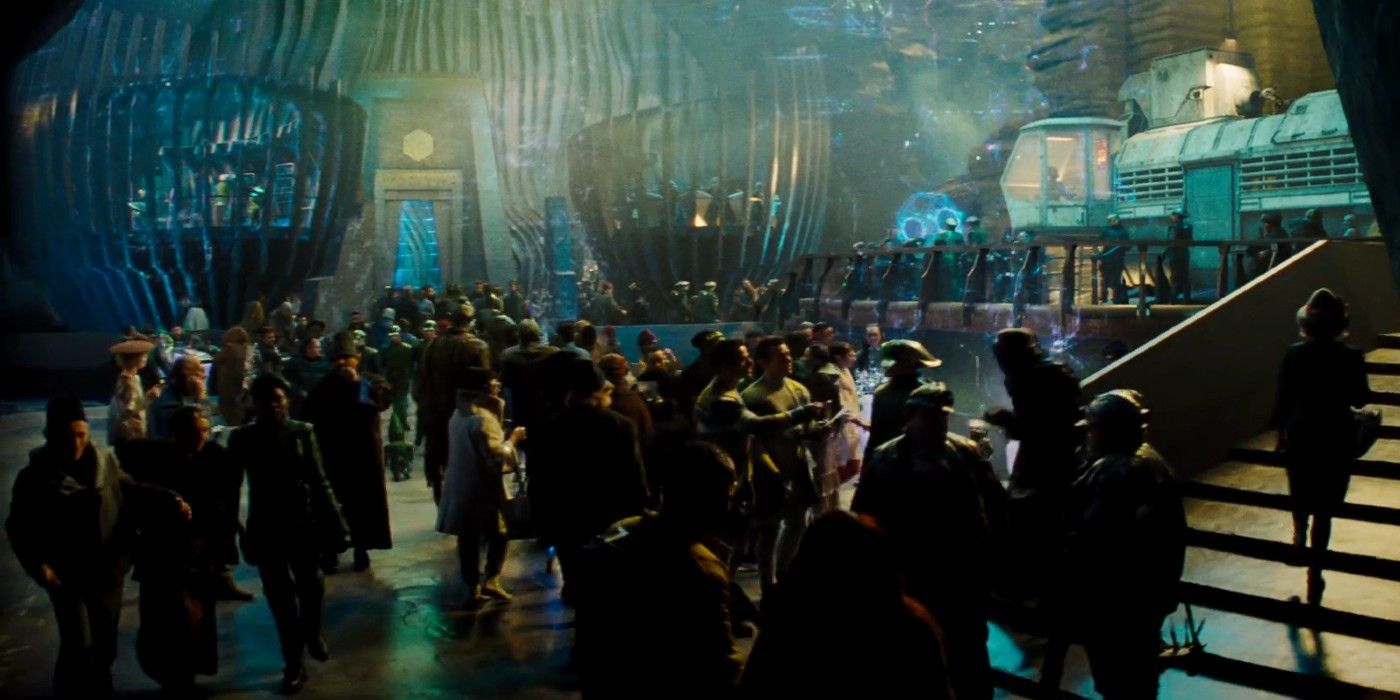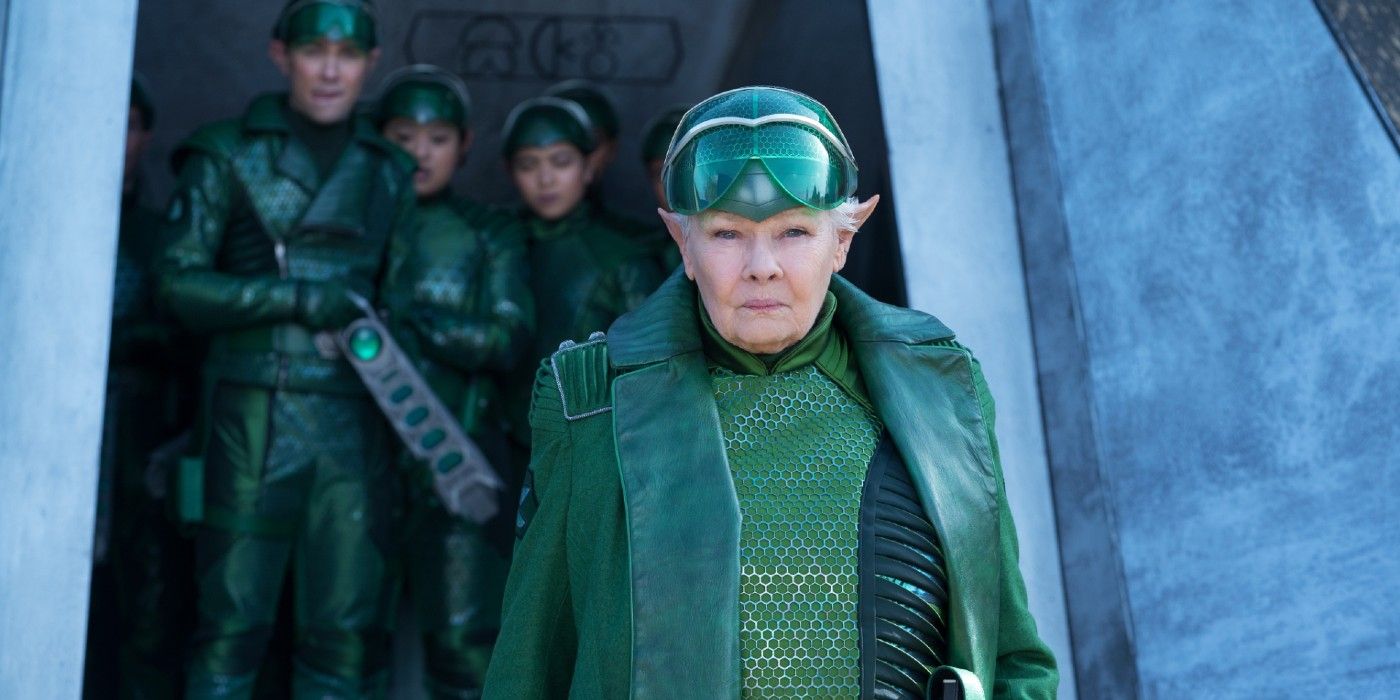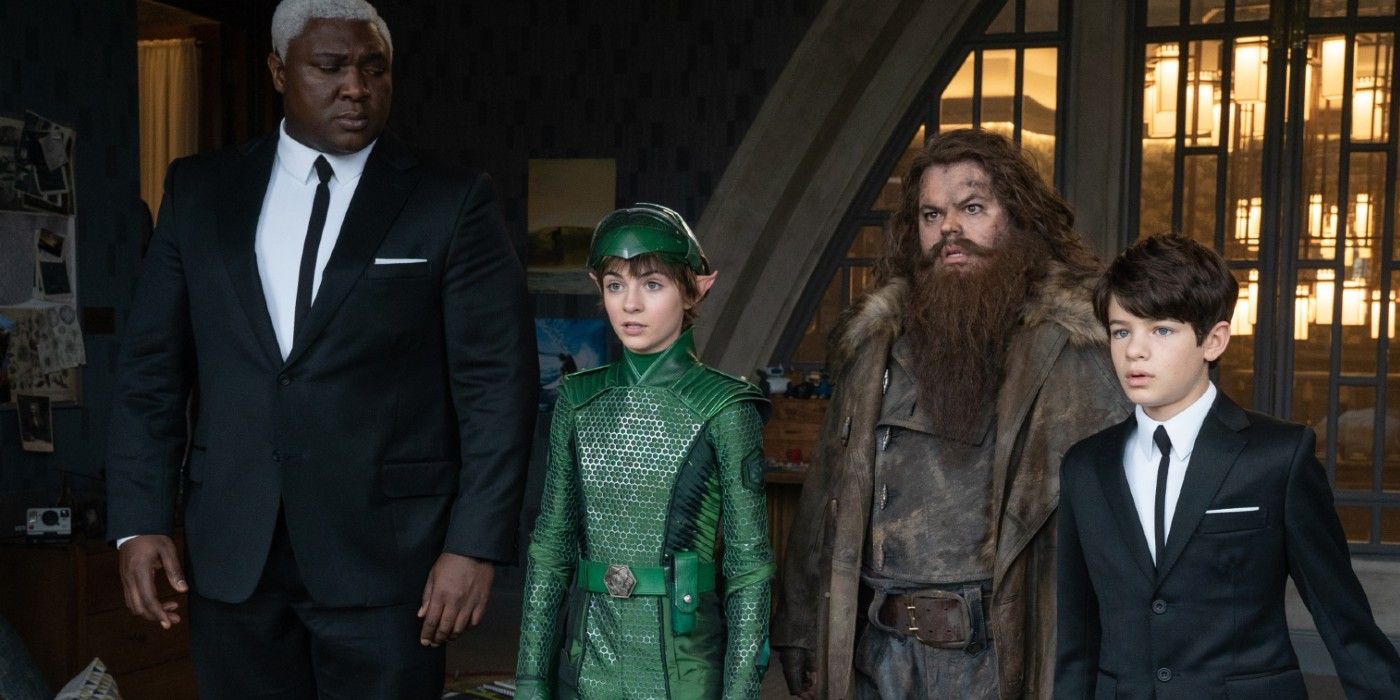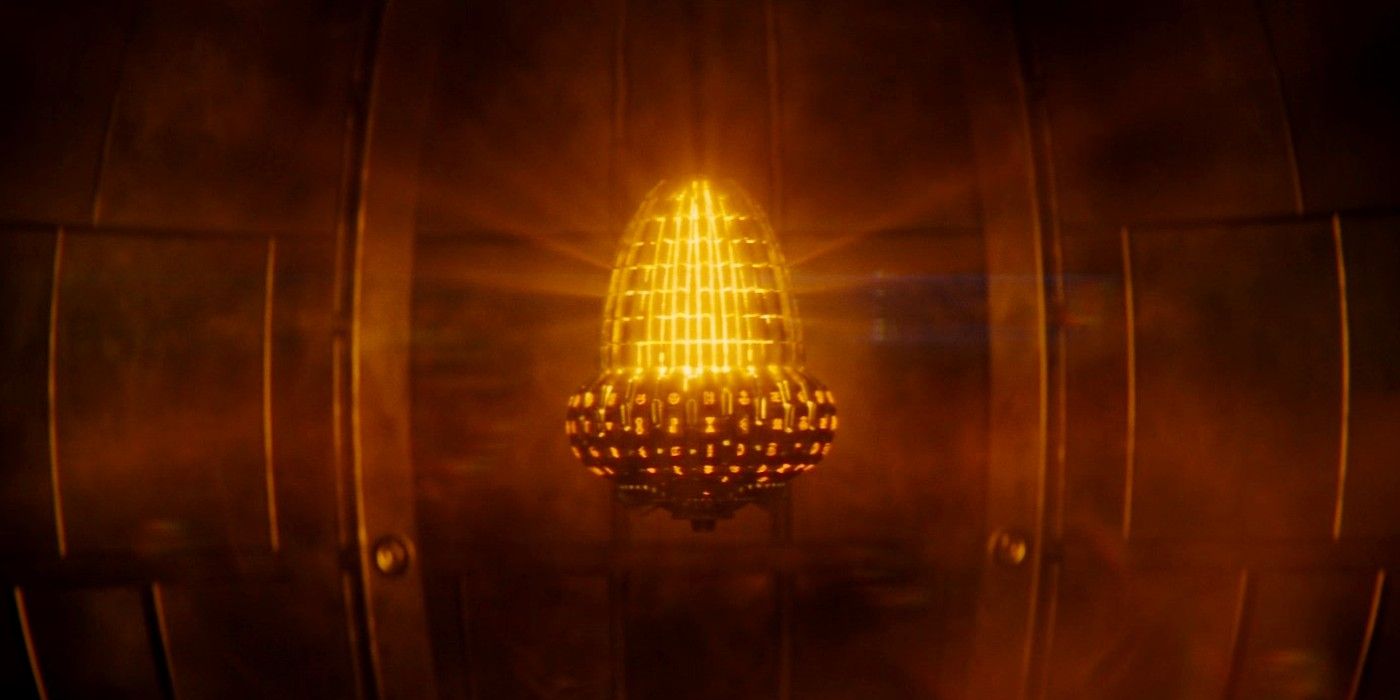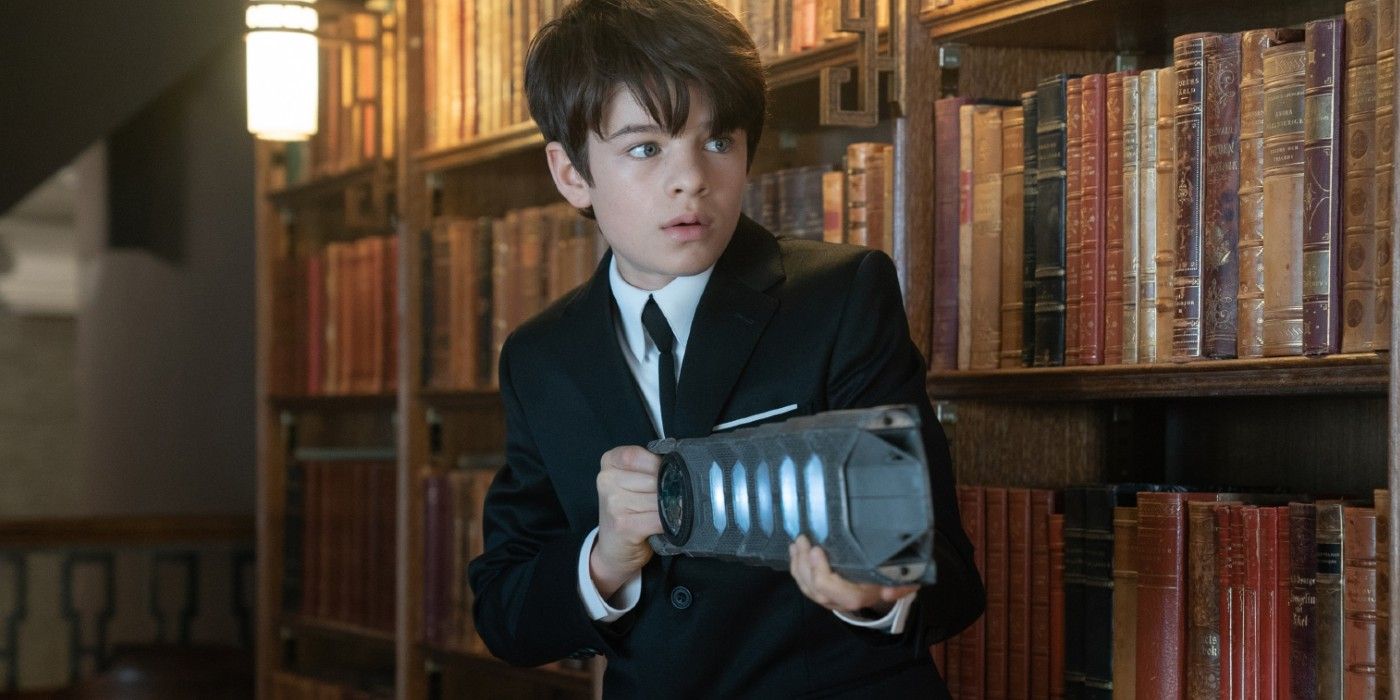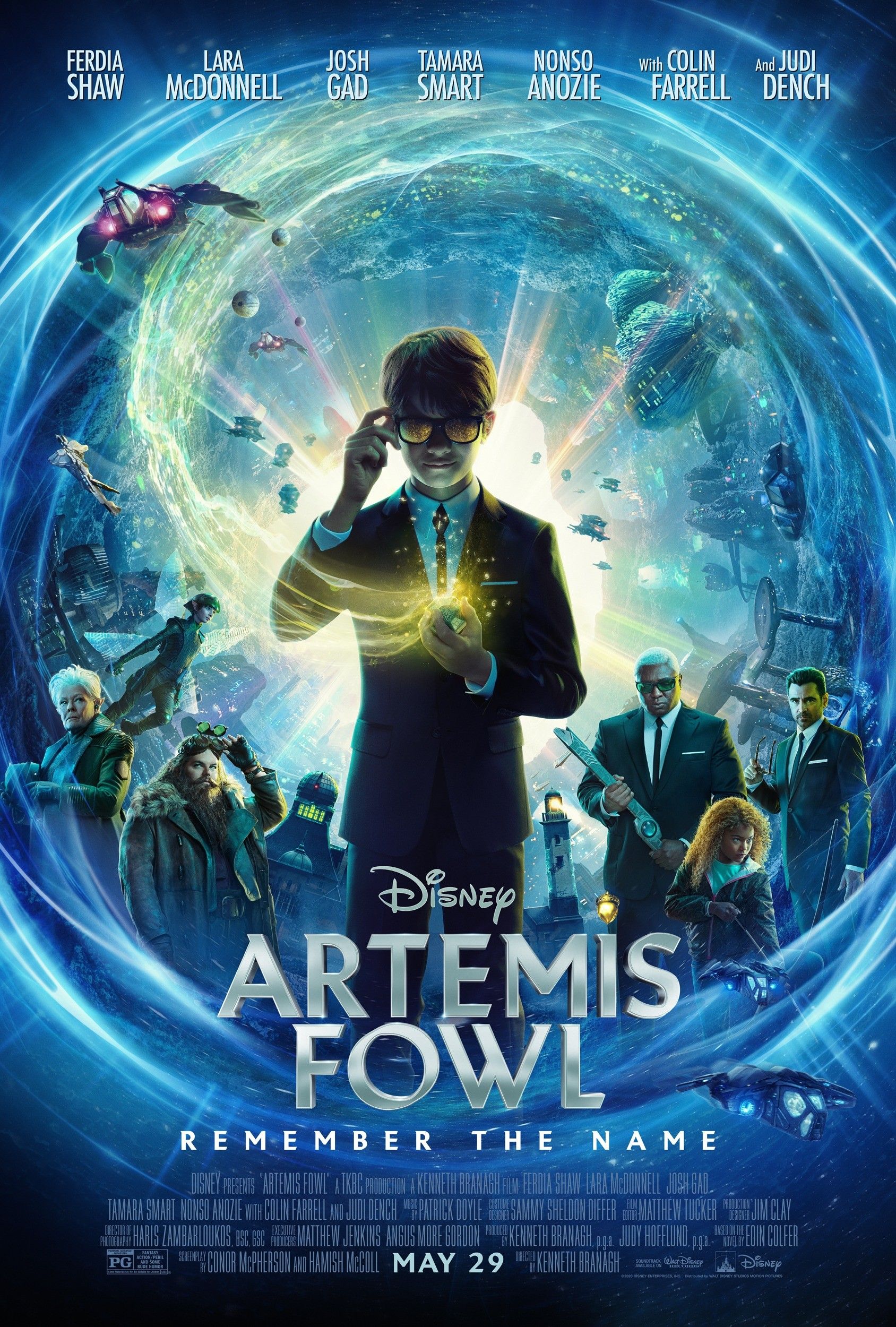Disney's adaptation of Eoin Colfer's novel, Artemis Fowl is finally being released, though not theatrically as had been originally planned. It like so many of 2020's movies was pulled from the release schedule once it became clear the COVID-19 pandemic would see theaters closed for months. For Artemis Fowl, this was especially bad timing because the adaptation's release had already been delayed a year following Disney's purchase of Fox. Now, not wanting to hold the film any longer, Disney is debuting Artemis Fowl on its streaming service, Disney+ on June 12.
Artemis Fowl tells the story of a 12-year-old genius who is descended from a long line of criminal masterminds. When his father is kidnapped, Artemis devises a plan to steal the necessary ransom from an ancient civilization - the incredibly advanced and secret underground world of fairies. Soon after, Artemis' home, Fowl Manor, comes under attack by the fairies and he must team up with his servant, a dwarf, and an elf in order to fend off the siege. Artemis Fowl is directed by Kenneth Branagh from a screenplay by Conor McPherson and Hamish McColl. It stars Ferdia Shaw as the young Artemis; Colin Farrell as his father; Nonso Anozie as the Fowl family's loyal servant, Butler; Lara McDonnell as the elf, Holly Short; Josh Gad as Mulch Diggums, a dwarf; and Judi Dench as the fairy commander, Root.
In early 2018, Screen Rant had the opportunity to visit the set of Artemis Fowl at the U.K.'s Longcross Studios. There, we toured the sets and spoke with many of the talented individuals tasked with bringing the world of Artemis Fowl to life. Here's everything we learned about the soon-to-be released movie adaptation of Eoin Colfer's beloved novel.
Fowl Manor Is A Real House They Actually Built
A large portion of Artemis Fowl takes place within and around Fowl Manor, and as such, the house becomes as important to the story as any of its characters. Originally, the plan had been to scout locations, but it quickly became apparent the production would be better off building the house themselves. And not just a set, but a real house constructed as any real home would be. It's insulated, heated, soundproofed, and even has its own wi-fi. In fact, the only thing that gives Fowl Manor away as not being an actual home are the LED lighting rigs hung from the ceilings.
With the hope that Artemis Fowl will be the start of a whole film series, the production was instructed to build a house that will last for at least seven years. Opting to build a real house as opposed to sets also best suited Branagh's fluid style of shooting, allowing the camera to follow actors from room to room, and for scenes to move from interior to exterior and vice versa. Though the real Fowl Manor is found on the grounds of Longrcoss Studios (and is even visible on Google Maps), in the film it's located near a seaside cliff, hence the lighthouse. The coastal setting will be added with digital effects, including a beach from where the fairies stage their siege.
For the look of Fowl Manor, Production Designer Jim Clay explained they wanted something that wasn't necessarily what one expects to find in rural Ireland. There are turrets and a large, domed observatory, but the house also bears some Spanish influence with its terracotta and brick exterior. The house is meant to be eccentric, but not gothic or scary, instead giving off the warm feeling of a family home. Inside, there are few pieces that were custom built for the movie, like a huge sofa created to look like a charging bull and a giant chandelier. The rest of the furniture and props seen within Fowl Manor, however, were all purchased by Set Decorator Celia Bobak. This includes everything from the toys in Artemis' bedroom to the over 12,000 books seen in the house's massive library.
Haven City Looks Like An Ocean Without The Water
While the design and construction of Fowl Manor drew heavily from the real world, Haven City needed to be something else entirely. A major city of the fairy world, Haven City is found deep underground or in what's known as the Lower Elements. Clay described the look of Haven City as similar to that of the deep ocean but without the water. It incorporates organic and fungal elements into its design but also historical architecture, giving Haven City the sense that it's ancient. For further inspiration, the design team looked to Arthur Rackham's art, hoping to infuse some of his fantasy style into their volcanic rock world.
The cavernous city will be created largely with digital effects, but several of its main locations are practical sets. The largest of these is the Lower Elements Police (LEP) Headquarters and its connecting plaza, which includes a prisoner transport - in where a scene of Holly breaking up some rioting goblins and dwarves takes place - and the lava chutes, pressurized valves that use magma to quickly propel shuttle pods to the surface. The LEP Headquarters is located in what's essentially Haven City's business district and it more or less functions like a fairy Scotland Yard. It's a massive, composite set, meaning it's possible to film the long, continuous takes that Branagh and his Director of Photography, Haris Zambarloukos, enjoy so much.
The ancient and organic influence continue upon entering LEP headquarters, with a massive stone entryway and walls carved to look like mushroom gills. Commander Root's office, teacup shaped and open in design with a boning structure, overlooks the entryway and further within is the LEP's inner sanctum. Designed as the headquarter's main hub, this room contains several blue screens that will later be rendered digitally to appear as bubble-shaped displays, as well as a command station for the centaur, Foaly (Nikesh Patel), with large discs on the floor that allow him to pull up different displays and input panels with his hooves. From here, he'll actually control much of the action that takes place later when the LEP lays seige to Fowl Manor.
Fairy Tech Is Influenced By Geometry & Nature
Just like how Haven City is made to look unlike any human city, the same must be true for the devices and weapons used by the fairies. Prop Master Barry Gibbs explained that the challenge for Artemis Fowl's props team was creating items for the fairies that don't look like their human-world counterparts, but are recognizable enough that audiences will know what they are. To achieve this, the props department looked to patterns found in geometry and nature for inspiration, incorporating those shapes into their designs.
This influence can be seen in practically every prop, from binoculars with prismatic, bug eye lenses to earbuds that uncurl like baby ferns. Nothing is allowed to look ordinary. The handcuffs used by LEP officers snap bracelets that magnetically seal, keyboards are octagonal and tiered with holographic screens, and tablets are flat crystal slabs. One of the most important props in Artemis Fowl is The Book of the People, a holy book carried by each fairy that contains their history, rituals, and other rules or traditions. An octagonal-shaped compact, The Book appears very old but also timeless, like a golden jewel. The Gnommish (fairy language) text on its pages is written in spirals, and when read the text will move off the page with digital effects.
The Different Designs & Styles Of Fairies
As with everything else designed for the fairies, their costumes and individual styles need to distinguish them from humans, but in this case, also from each other. The People as a group are comprised of several different species of fairies - elf, sprite, goblin, dwarf, and centaur. Holly Short is an elf, for example, while Mulch Diggums is a dwarf, and everything from their stature, build, and attire differentiates one from the other. Elves and sprites are both small with delicate features, but sprites will have their own wings while elves must wear mechanical ones. The goblins have long noses, long ears, pointy teeth, and their skin is smooth with a bluish tint. Theirs is also the longest application job out of any of the fairy makeups.
Each species has their own ear shape; elvish ears are narrow and pointy, for example, dwarf ears shorter and thicker. Each of Artemis Fowl's fairy characters also have their own unique ear shape so that no two are exactly alike, and including the extras, the makeup team created about 100 different ear designs. The hairstyles for the elves and sprites are short and simple, with Dench's Commander Root having a slightly more androgynous, almost David Bowie style. Gad's Mulch, however, has shaggy hair and a beard, while Patel's Foaly has a sleek mane of hair on one side of his head and is shaven on the other, exposing some dappling patterns on his skin. Foaly also has a diamond shaped piece of tech implanted directly into his forehead, hinting at the advanced fairy tech and Foaly's role in using it.
For the uniforms of the LEP officers, costume designer Sammy Sheldon Differ again looked to reoccurring patterns found in nature. The green jumpsuits have a mermaid mesh pattern under which is an iridescent, shiny material inspired by beetles, and there are hexagonal shapes worked throughout the design. For those fairies without natural wings, there's a backpack that magnetically attaches to the suit that contains a set of mechanical wings, while a sprite's uniform has a smaller backpack that protects their wings while not in use. There are also hand-held controls that help with steering while in flight, not to mention, give the actors something do with their hands. In contrast to the polished looking LEP officers, Mulch and the goblins have a rougher style, with the dwarf dressed in brown leather work clothes, almost like a miner's uniform, while the goblins dress in clothes similar to street gear, wearing hoodies and sneakers.
The Importance Of Acorns
So much of the design for the fairy world draws inspiration from the natural world, but no iconography is more prevalent than the acorn. This is because acorns play a crucial role in the ritual a fairy must perform in order to restore their magic. As described in The Book of the People, a fairy must take an acorn from an old oak tree near a riverbend, travel with it for a distance, replant it in the ground and repeat a short phrase, after which their magic is replenished. It's while performing this ritual that Artemis and Butler are able to get the drop on Holly and kidnap her, preventing her from completing the ritual and renewing her magic.
As acorns are so important to fairies, they appear on just about everything. On the LEP uniforms, for instance, an acorn graphic is used for the logo patch and acorn pins are used to denote rank; Holly has one acorn, while Root has three. There is also an artifact called the Aculos (the Latin word for acorn) that appears in the Artemis Fowl trailer, seen in Artemis Sr.'s secret study. On set, the Aculos was described as an incredibly important prop but no further details were given, and as the item doesn't appear in the books, it's anyone's guess just what it is. Suffice it to say, its acorn design is enough to indicate its significance, and there's little doubt the Aculos plays an important role in the story.
The Neutrino Gun Is Now So Much More Than A Gun
Fans of the Artemis Fowl books will be familiar with the neutrino gun, a nuclear-powered blaster used by LEP officers that has settings ranging from scorched to crisped to a cinder. For the film, however, the neutrino gun has been designed to function as so much more than simply a gun. First off, as the movie is aimed at families, it was decided it shouldn't resemble a pistol. Instead, it's long and rectangular, has a handle, and can extend telescopically to become a variety of other weapons.
The ideas for the neutrino gun's other functions largely came from Branagh, and as he devised new ways for it to be used while on set, the prop would be redesigned to allow for whatever he came up with. Now, along with firing like pulse gun, the neutrino gun is also capable of becoming a sword, staff, and even a bow that fires energy arrows. In Artemis Fowl's trailer, both Artemis and Butler can be seen using the weapon, with Artemis firing it in its pulse gun setting and Butler using it to fire arrows. Basically, if there's one prop from the movie that seems destined to become a tie-in toy, it's this revamped neutrino gun.

